
All categories
Featured selections
Trade Assurance
Buyer Central
Help Center
Get the app
Become a supplier

(914 products available)


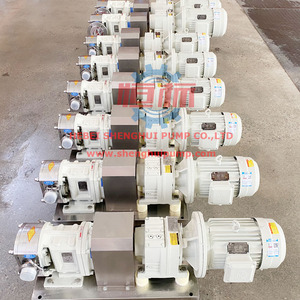
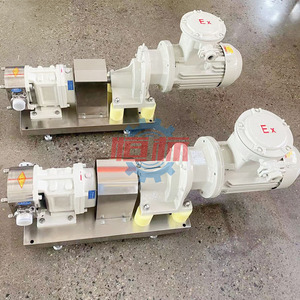
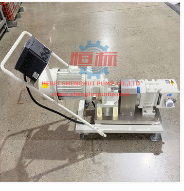
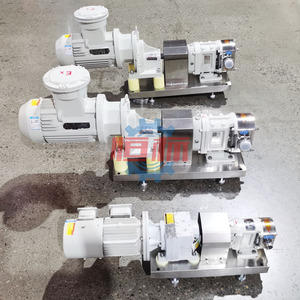
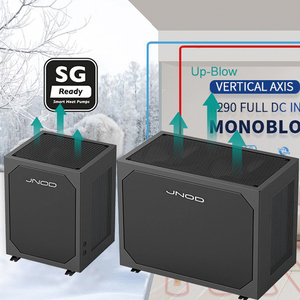


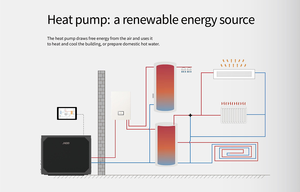


















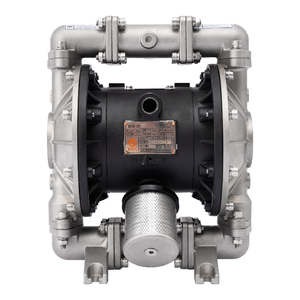


















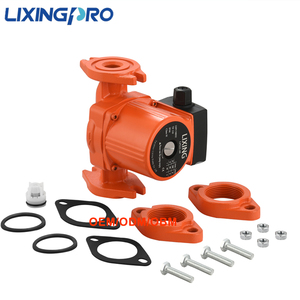



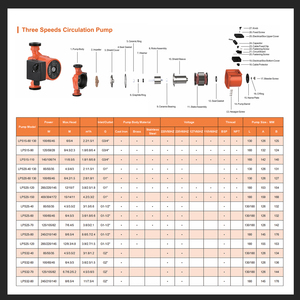

Centrifugal Flange Circulation Pumps
Thus far, centrifugal pumps circulate liquids using a rotating impeller. The liquid is force fed from the impeller's center by centrifugal force as the impeller spins, which causes the liquid to flow outward and thus increase its velocity. This resulting high-velocity liquid passes through the pump outlet and converts low-pressure liquid at the pump inlet into high pressure. Due to their efficiency in handling large water volumes, centrifugal flange water pumps are widely used in HVAC systems, boilers, and industrial processes.
Positive Displacement Flange Circulation Pumps
Apart from that, a rotating element in a positive displacement pump traps a fixed volume of fluid in a pump chamber with each pumping cycle and discharges it against the fluid's resistance to pressure. Such pumps are used whenever high viscosity liquid move needs to be accomplished in a fluctuated pressure atmosphere. Thus far, flange circulation water pumps are used to effectively transfer oils, chemicals, and slurries precisely and steadily.
Electric Flange Circulation Pumps
Electric pumps are driven by an electric motor whose purpose is to convert electrical energy into mechanical energy. This type of pump is especially desirable because of its minimal manual intervention, hence the availability and constant flow rate. Consequently, electric flange circulation pumps are applied in residential heating systems, such is an example.
Manual Flange Circulation Pumps
Manual pumps work on human intervention. Although modernized manual pumps exist, which are mainly operated by hands and can be rotated in all possible ways, they are traditionally called 'hand pumps.' These types of pumps are less common for large-scale commercial operations, where their failure to work contributes to increased downtime.
High-Pressure Flange Circulation Pumps
As their name implies, high-pressure pumps are specially designed to work under high-pressure conditions inexpensively, and compression is a prerequisite. In industries where pressure differentials are crucial, such sites employ high-pressure positive-displacement circulation pumps for optimal performance. Stainless steel circulation pump s are suitable for such pumps due to their strength and resistance to corrosion.
Submersible Flange Circulation Pumps
These pumps are placed completely underwater and are used to move liquids around while in water. Most submersible pumps have their impellers designed to withstand high water pressures. Submersible flange circulation pumps are thus used in deep well extraction and underwater construction projects.
HVAC Systems
A flange circulation pump is one of the main components of heating, ventilation, and air conditioning (HVAC) systems. These pumps move hot or cool water through a network of pipes to ensure temperature equilibrium throughout the structure. They maintain the desired temperature by transferring heat from the heating/cooling source to the building.
Boilers and Steam Systems
In industrial and commercial facilities, boilers play an integral part in producing steam for processes, heating, and power generation. Flange pumps work in this situation by circulating water within the boiler to attain a balance between the required steam production and the water level in the boiler. It guarantees safety and efficiency by preventing boiler dry-out conditions.
Water Treatment Plants
Water treatment plants utilize pumps to circulate water through various treatment processes, such as filtration and disinfection. Pumps ensure adequate water flow and pressure for effective contaminant removal and compliance with regulatory standards. Flange circulation pumps are used to move chemicals for system maintenance and repair.
Industrial Processes
Pumps play a key part in many manufacturing processes that require the circulation of liquids, including coolants, chemicals, and other process fluids. They keep the right levels of fluid used in production processes, which affects product quality and safety. Flange circulation pumps are particularly suitable for high-pressure and high-temperature applications in industries.
Renewable Energy Systems
Circulation Pump accessories for water pumps are key in geothermal and solar thermal energy systems. These pumps circulate fluids to either extract heat from the earth in geothermal systems or transfer heat from collectors to storage tanks and buildings in solar thermal systems. They contribute to the efficiency and stability of renewable energy production systems.
Mining and Agriculture
Pumps are imperative for mineral extraction in mining operations. They assist in the circulation of slurry, a mixture of solid and liquid, and other vital process fluids. In agriculture, pumps are integral to irrigation systems, providing water for crops, which boosts food production globally.
Flange Design
The circular flange on the pump housing has bolt holes and is thus designed with the necessary pipe connection. This connection style provides great sealing and alignment stability. The pump can thus be easily integrated into existing pipework systems.
High Efficiency
Due to the centrifugal force it employs, a high-efficiency central flange pump is able to circulate large liquid volumes with minimum energy consumption. Good pump design reduces turbulence and friction, which hence maximizes fluid flow and decreases energy loss, decreasing operating costs in time.
Durability
Circulation pumps are thus built with quality materials to withstand adverse operating conditions such as high temperatures, high pressure, and chemical exposure. Commonly used materials are bronze, stainless steel, and cast iron. These materials, inclusive of stainless steel bronze and cast iron, facilitate prolonged pump life and reduced maintenance requirements.
Versatility
These pumps can circulate wide varieties of liquids: water, oils, chemicals, and slurries. This versatility allows their use in varied industries, including manufacturing, energy, agriculture, and water treatment. These pumps are suited to differing application needs, with positive displacement pumps being ideal for more viscous fluids and centrifugal pumps for more easily circulating fluids.
Noise and Vibration
Pumps generally feature good noise and vibrational reduction features. A good pump with low noise and vibrational intensity improves the working environment, especially in such places as offices and residential buildings. Lower noise and vibration get better equipment lifespan due to less mechanical stress.
Automatic Control Systems
Modern flange circulation pumps are fitted with smart-action automatic control systems that ensure optimal performance under differing conditions. These control systems automatically regulate pump speed and operation based on demand, resulting in energy savings and more effective system performance. Pumps are easily integrated with building management systems in HVAC applications for real-time monitoring and control.
When choosing a flange circulation pump, several factors should be considered to ensure optimal performance and longevity.
Fluid Type
Identifying the kind of fluid that will need to be pumped is therefore pertinent. Is it water, oil, or a chemical solution? Is it likely to be something more viscous? This is because centrifugal pumps are great for thin liquids. So, positive displacement pumps must be used when dealing with high-viscosity fluids.
Temperature and Pressure
Find out the fluid's maximum temperature and pressure. Make sure the pump can thus handle these conditions. Going above the limit may irreparably damage the pump and cause downtime. For higher pressure and temperature, use pumps rated appropriately.
Flow Rate
Calculate the required flow rate, which is the volume of fluid that has to been moved per a specified period. Too low of a flow rate causes pump overheating, whereas too high of a flow rate leads to excessive energy consumption. Pumps with adjustable speed can help here to maintain the flow rate within the desired range.
Energy Efficiency
Electricity bills used in pumping can get pretty expensive. Therefore, it will be an uphill battle to seek out the most energy-efficient pump. So, look for units equipped with smart controls capable of energy conservation following the demand.
Maintenance Requirements
What is the required upkeep and care of the pump chosen? Designs that can be easily accessed for repair, such as bearings substitution, help reduce downtime. Select corrosion-resistant materials to save the upkeep costs.
Installation and Compatibility
Lastly, analyze how the pump will be installed into the existing system. The flange size and type should be compatible with this. Make space for the new pump to be installed, too. This ensures that the pump chosen fits both the system and the space.
A1: Its main purpose is to circulate a fluid throughout the system or process. It provides the needed force or pressure to overcome resistance and move the fluid from one point to another.
A2: centrifugal pumps create flow by using an impeller that spins within the fluid to generate pressure, while positive displacement pumps draw fluid into a chamber and then mechanically reduced the volume of the chamber to increase the fluid pressure.
A3: Common materials used to construct pumps include cast iron, stainless steel, brass or bronze, and thermoplastics depending on the application and environment requirements.
A4: Flange design impacts the pump's performance in the sense that It provides easy installation and good sealing between the pump and connected pipelines, which enhances flow efficiency.